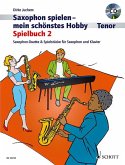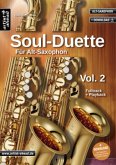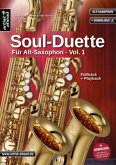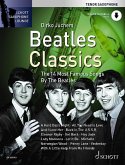"Recuerdo de una Jornada" was composed for, and dedicated to, the Cuban saxophonist Jorge Luis Almeida and the Havana-based saxophone quartet "Habana Sax". Jorge L. Almeida graduated from Cuba's National School of Arts in 1975 and from the Instituto Superior de Arte in Havana in 1987; under the tutelage of professor Daniel Deffayet, he completed two courses of studies at the Conservatoire National Supérieur de Musique et de Danse de Paris in France "with distinction" in the years 1987 and 1990. In 1987, Almeida founded the saxophone quartet "Cuarteto de Saxofones de La Habana" and later on, in 1991, "Habana Sax". The repertoire of the latter, which is one of the most important ensembles of its kind in Cuba, ranges from classical to contemporary music. Infl uences of Cuban popular music as well as jazz can be felt in many of the ensemble's works, and often a percussionist is added to the group's lineup. Throughout the years, the quartet has presented itself at festivals and in the most famous concert halls all over the world. Various technical particularities that represent quite a challenge in the execution of Cuban music manifest themselves in this composition, such as syncopations, off-beats, the "cinquillo cubano" and, as its most prominent aspect, the "clave". It is the "son clave" (2-3) that marks the beginning of the piece and is, for instance, picked up by the four saxophones in bars 30 and 31. The part played by the baritone sax should especially be pointed out: One the one hand, it assumes the role of the bass building the rhythmic and harmonic basis; on the other hand, it provides further rhythmical support when executing the "tumbaos" in case an additional percussionist is added to the quartet (which, of course, is optional since the piece can be performed without any percussion instruments). In bar 32, the tempo changes and the piece switches over to a Latin jazz feel making use of a phrasing typical of this style. This feeling is maintained up to bar 54, where the tenor sax starts playing a "tumbao", developing into a so-called "champola" (a term that refers to the layering of different "tumbaos" which, when played in conjunction, result in a "contagious" rhythmic pattern) in bar 58. Finally, in bar 72, the composition returns to tempo primo, being performed in the style of a "son", and ends with the execution of the "son clave".Instrumentation:4 saxophones (SATBar) + Drum Set (opt.)"Recuerdo de una Jornada" wurde für den kubanischen Saxophonisten Jorge Luis Almeida und das Saxophonquartett "Habana Sax" aus Havanna komponiert und ist ihnen gewidmet. Jorge L. Almeida machte 1975 seinen Abschluss an Kubas National School of Arts und 1987 am Instituto Superior de Arte in Havanna. Unter der Leitung von Professor Daniel Deffayet schloss er 1987 und 1990 zwei Studienkurse am Conservatoire National Supérieur de Musique et de Danse de Paris in Frankreich "mit Auszeichnung" ab. 1987 gründete Almeida das Saxophonquartett "Cuarteto de Saxofones de La Habana" und später, 1991, "Habana Sax". Das Repertoire von Letzterem, das als eines der bedeutendsten Ensembles seiner Art in Kuba gilt, reicht von klassischer bis zu zeitgenössischer Musik. Einflüsse aus der kubanischen Popularmusik sowie aus dem Jazz sind in vielen Werken des Ensembles zu spüren, und oftmals wird die Besetzung der Gruppe durch einen Perkussionisten verstärkt. Im Laufe der Jahre ist das Quartett auf Festivals und in den berühmtesten Konzertsälen der Welt aufgetreten. Verschiedene technische Besonderheiten, die bei der Interpretation kubanischer Musik eine große Herausforderung darstellen, sind in dieser Komposition zu finden, wie z. B. Synkopen, Offbeats, der "Cinquillo cubano" und als hervorstechendstes Merkmal die "Clave". Und es ist eben dieser "Son clave" (2-3), mit dem dieses Stück beginnt und der beispielsweise von den vier Saxophonen in den Takten 30 und 31 aufgegriffen wird. Die vom Baritonsaxophon gespielte Stimme sollte besonders hervorgehoben werden: Auf der einen Seite übernimmt es die Rolle des Bass, der die rhythmische und harmonische Grundlage legt, und auf der anderen Seite bietet es weitere rhythmische Unterstützung bei der Ausführung der "Tumbaos", falls das Quartett Verstärkung durch einen zusätzlichen Perkussionisten erhält (was natürlich optional ist, da das Stück auch ohne Perkussionsinstrumente gespielt werden kann). In Takt 32 ändert sich das Tempo, und das Stück geht zu einem Latin Jazz-Feeling über und nutzt dabei eine für diesen Stil typische Phrasierung. Dieses Feeling wird bis Takt 54 beibehalten, wo dann das Tenorsaxophon einen "Tumbao" zu spielen beginnt, der sich in Takt 58 zu einer so genannten "Champola" entwickelt (ein Begriff, der sich auf die Schichtung verschiedener "Tumbaos" bezieht, die, wenn sie gemeinsam gespielt werden, zu einem "ansteckenden" rhythmischen Muster führen). In Takt 72 kehrt die Komposition schließlich zum Tempo primo zurück, wird dabei im Stil eines "Son" gespielt und endet mit der Ausführung des "Son clave".Schwierigkeitsgrad: 4-5
Hinweis: Dieser Artikel kann nur an eine deutsche Lieferadresse ausgeliefert werden.
Hinweis: Dieser Artikel kann nur an eine deutsche Lieferadresse ausgeliefert werden.








